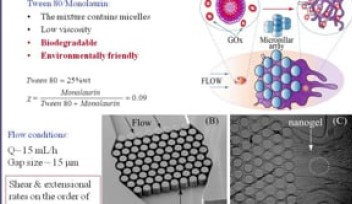3D Structure of a Protein
This rotating image shows the 3D structure of a protein using two different imaging techniques: Cryo-MET and X-ray crystallography. This sample image is Immunoglobulin G, the most abundant antibody in the human immune system.
The two images do not align perfectly because of the protein’s highly flexible structure. Proteins are always in motion, allowing them to conform to different shapes for reactions with other molecules.
Cryo-MET, or the grey, fluffy image, shows one possible conformation of the protein. The technique freezes a number of protein molecules and then creates many of these grey images, each showing the protein’s shape at one moment in time. X-ray crystallography, or the yellow ribbon image, shows an average of all possible conformations. The result has a higher resolution, but the flexibility of the protein is not shown. The different parts of the protein could be in a very different conformation at any given moment. Combining the two imaging techniques allows researcher to better determine the shape of molecules and how they move.
Copyright OIST (Okinawa Institute of Science and Technology Graduate University, 沖縄科学技術大学院大学). Creative Commons Attribution 4.0 International License (CC BY 4.0).
Tags














